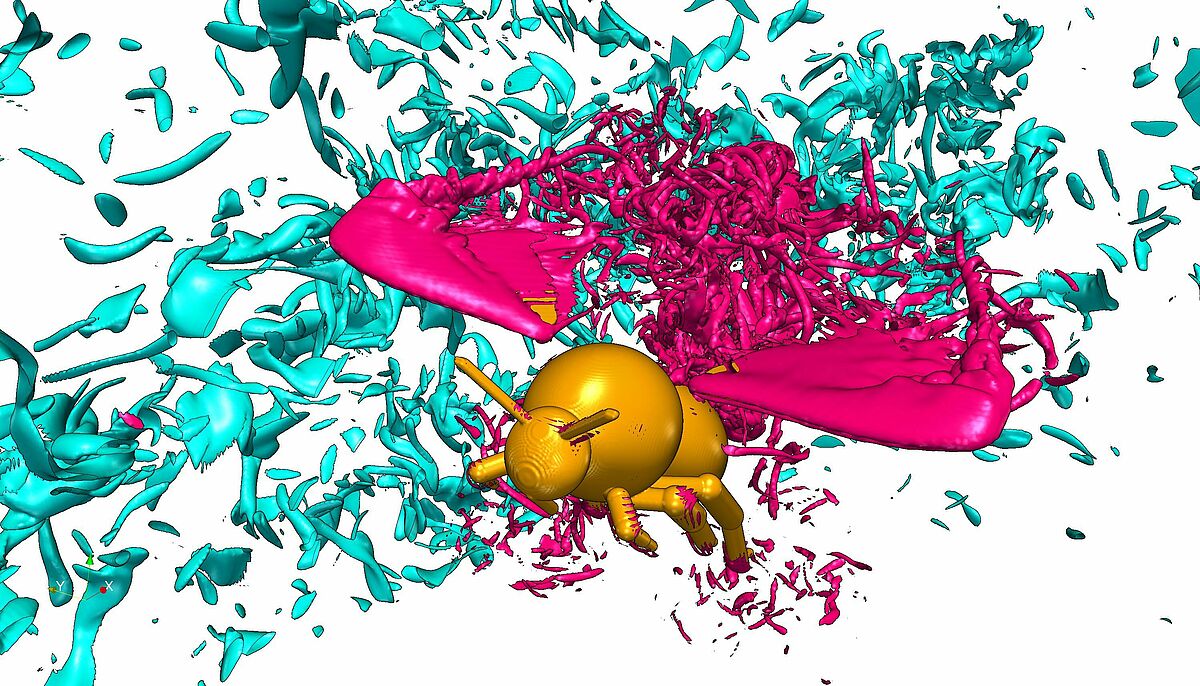Welcome to the AIFIT (Aerodynamics of Insect Flight In Turbulent Flow) project
The AIFIT project is a collaborative, french-german research project, funded by the Deutsche Forschungsgemeinschaft (DFG grant SE824/26-1) and the Agence Nationale pour la Recherche (ANR Grant 15-CE40-0019). Four partners at the Universities of Rostock, Paris, Berlin and Marseille are combining their own unique perspectives on the problem of flapping flight in turbulence.
The project aims at improving our understanding of how insects manage to fly in their turbulent environment, specifically if flapping flight has advantages over conventional fixed-wing flight, as employed by human-designed aircraft.
The aerodynamics of insect flight currently receives considerable attention. The fundamentals of insect flight were first explored assuming that insects move in quiescent air. However, natural environment is usually turbulent, but we know very little on how insects manage to fly on windy days. For man-made micro air vehicles it is likewise important to fly in difficult flow conditions. This project proposes to investigate the interaction of insects with turbulence from the complementary perspectives of experimental biology and computational physics. We will define a set of model turbulent flows with reproducible statistical properties, varying systematically the energy content of the scales of turbulent motion, with similar flow conditions in experiments and numerical simulations. We also put a major emphasis on the significance of wing elasticity, and devise a suitable flexible wing model that closely mimicks the elastic properties of real wings, which we measure in an experimental facility. Biological experiments account for the whole complexity of animals, including the brain, sensory system and the resulting changes in the wingbeat kinematics under perturbed flight conditions. Numerical simulations allow studying isolated effects and thus to reduce the problem's complexity. Combining biological experiments on tethered and freely flying insects and numerical simulations of model insects with rigid and flexible wings in tethered and free flight in the same turbulent flow environment allows giving partial answers to the three major questions we consider: (i) What are impacts, benefits and limitations of environmental turbulence on the aerodynamics of flapping insect flight? (ii) How does turbulence affect the energetic cost of flapping flight with flexible and rigid wings? (iii) What behavioral strategies do insects employ to cope with turbulent perturbations? These questions are relevant for both fundamental and applied research, and their interdisciplinary nature requires employing several perspectives.
Partners of AIFIT
- DAP Department of Animal Physiology, University of Rostock
- ISTA Institut für Strömungsmechanik und Technische Akustik
- M2P2 Laboratoire de Mécanique, Modélisation et Procédés Propres
- LMD Laboratoire de Météorologie Dynamique, Ecole Normale Supérieure, Paris
- Visit the official homepage of AIFIT
- Watch CFD modelling of insects flying in turbulence
- Visit our french partner
- If you have any questions regarding the project, please contact:
fritz.lehmannuni-rostockde
Vorticity of inflow and behind an insect
Vorticity in a virtual wind tunnel (2,5 m/s) with turbulent flow conditions. The modelled insect flies
at Re=2042. Turbulence does not change lift/drag production but leads to higher temporal variance.


